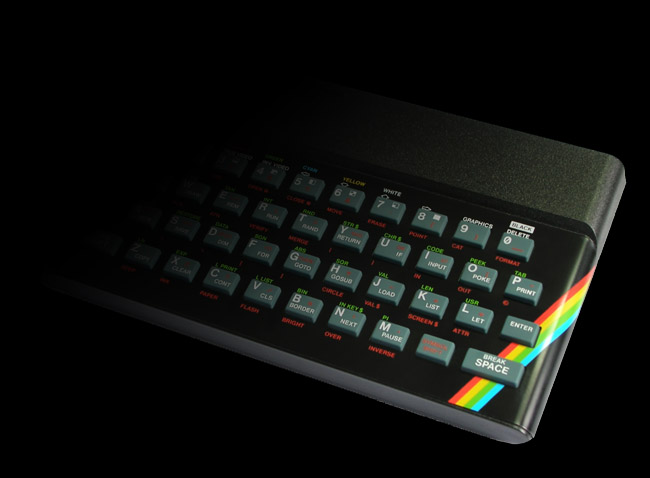

If you think the Spectrum Next looks gorgeous, it’s all his doing. Over the decades his creations have stood out of the crowd and survived the test of time, remaining icons of design to this day.
#SINCLAIR ZX SPECTRUM DO DO SNO BEES SOFTWARE#
Once they created the hardware and software to make it run (the project was then called TBBlue), Rick Dickinson joined the group to wrap all that goodness into one heck of a design that any true Sinclair fan should fall in love with.Īn industrial designer of unparalleled talent, Rick’s seminal works include the ZX80, ZX81, ZX Spectrum, Plus and QL. The Spectrum Next was born out of the incredible (and hacky) minds of Victor Trucco and Fabio Belavenuto, Speccy enthusiasts who have been keeping all sorts of retro hardware alive for the past 20 years. Here’s the Next housed within an original Speccy. We think the job is done! Rick also took great care to create a keyboard that’s more responsive and features higher bandwidth input than the original, using a butterfly mechanism to power a tactile response to any fingertip touching its keys. We got to thank Rick Dickinson, the designer of all things Sinclair, for dedicating his time and amazing team to come up with a spiritual successor to one of the best and most loved industrial designs ever.

Storage: SD Card slot, with DivMMC-compatible protocol.Video: Hardware sprites, 256 colours mode and more.Memory: 1024Kb RAM (expandable to 2048Kb on board).Here’s what under the hood of the machine: The Spectrum Next is fully implemented with FPGA technology, ensuring it can be upgraded and enhanced while remaining truly compatible with the original hardware by using special memory chips and clever design. The latest pre-production fully working prototype board Here is our answer: The Spectrum Next – an updated and enhanced version of the ZX Spectrum totally compatible with the original, featuring the major hardware developments of the past many years packed inside a simple (and beautiful) design by the original designer, Rick Dickinson, inspired by his seminal work at Sinclair Research. Meanwhile hardware hackers around the world have expanded the ZX Spectrum to support SD card storage, feature new and better video modes, pack more memory, faster processor… Problem is, these expansions can be difficult to get hold of, and without a standardised Spectrum, no one knows what to support or develop for.

Alongside this there are thousands of awesome games in the back catalogue to play. New games are being launched all the time, the demoscene carries on pushing the hardware limits to the unimaginable, artists keep on creating great 8-bit eyecandy and music with it. The Speccy was, and still is, on a league of its own.ĭecades have come and gone and the Speccy is still alive and kicking. Why wouldn’t we? It was much more than just a computer: it was a machine that sparked a gaming revolution, neatly housed within its iconic design powered by sheer simplicity. While the majority of software released for the ZX Spectrum consists of games, other software including word processors, spreadsheets and programming tools were available as well.We love the ZX Spectrum. Peripherals for the system included a printer as well as joystick ports. Several versions of the ZX Spectrum were produced with varying features, and clones of this system (some official, some unofficial) were made as well. Several models were eventually released, including 16KB RAM and 48KB RAM versions, as well as many different compatible peripherals and software programs.Īlthough the Spectrum's hardware (particularly the keyboard) received some amount of criticism, it was a very popular machine primarily on account of its size and portability.
#SINCLAIR ZX SPECTRUM DO DO SNO BEES SERIES#
Released in 1982, the Spectrum was the first of its series to be marketed strictly for home use. Preceded by the much less popular ZX80 and ZX81 computers by Sinclair, the ZX Spectrum was developed by British technology innovator, Sir Clive Sinclair, who had also developed one of the first successful pocket calculators in the 1970s.


 0 kommentar(er)
0 kommentar(er)
